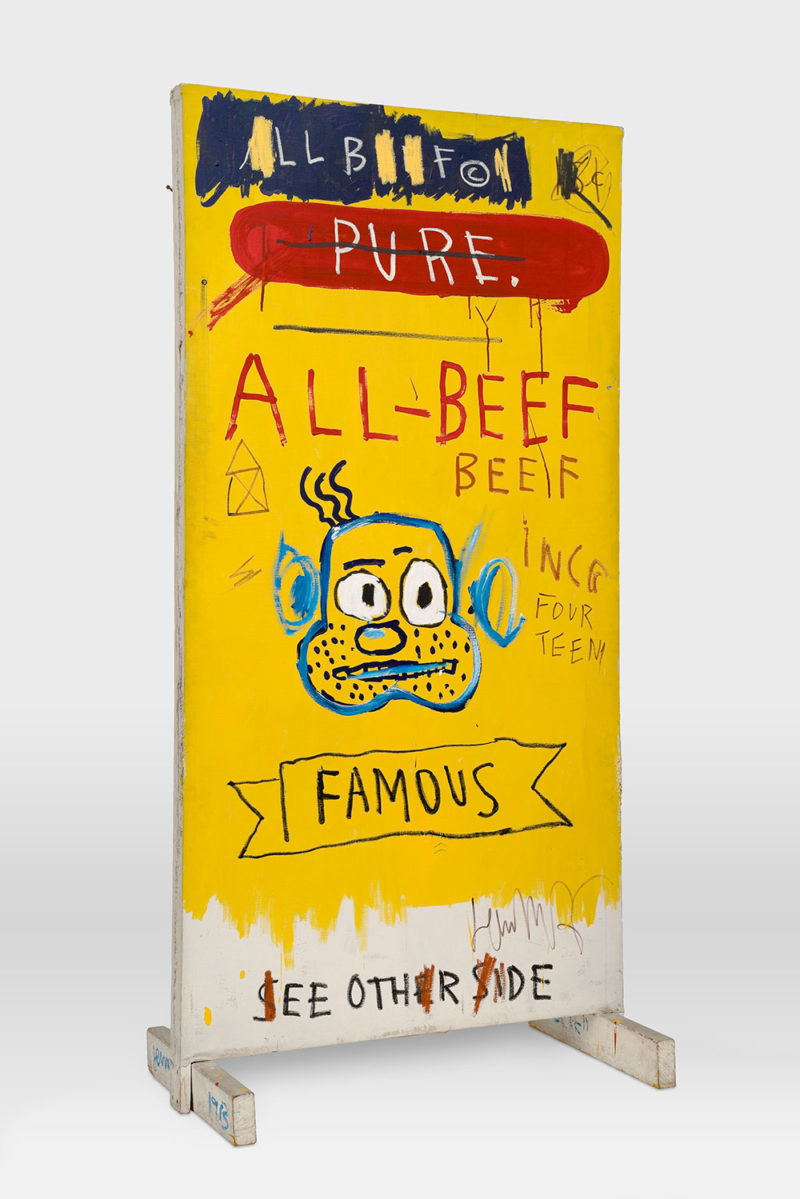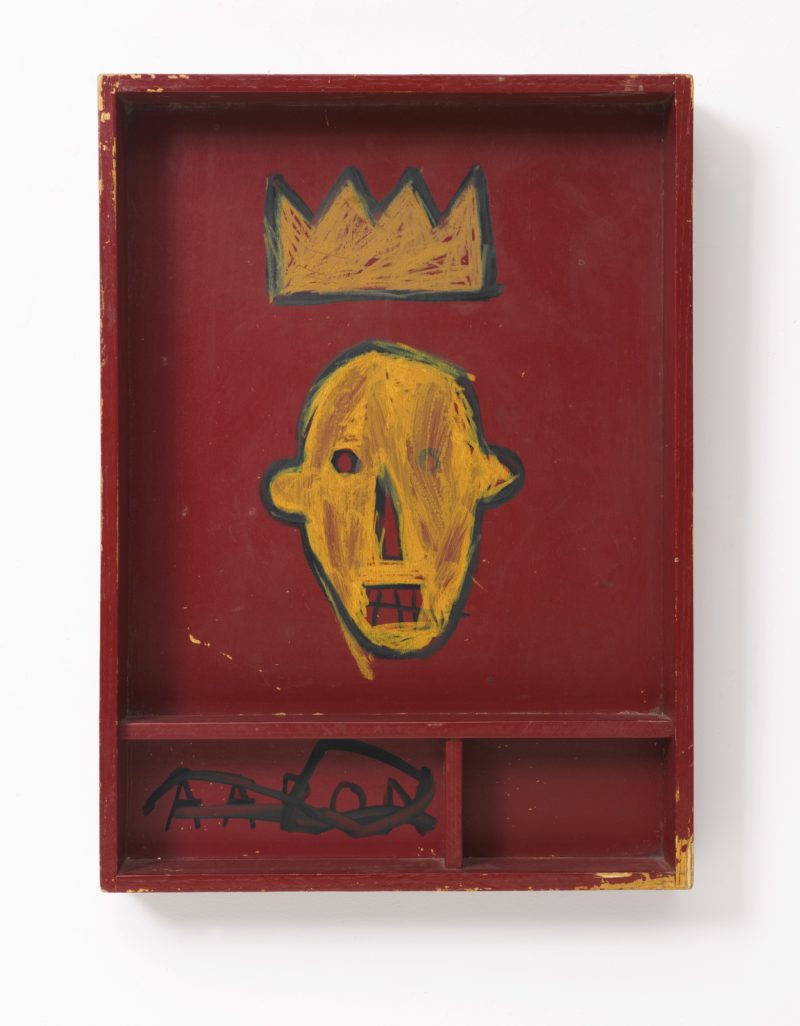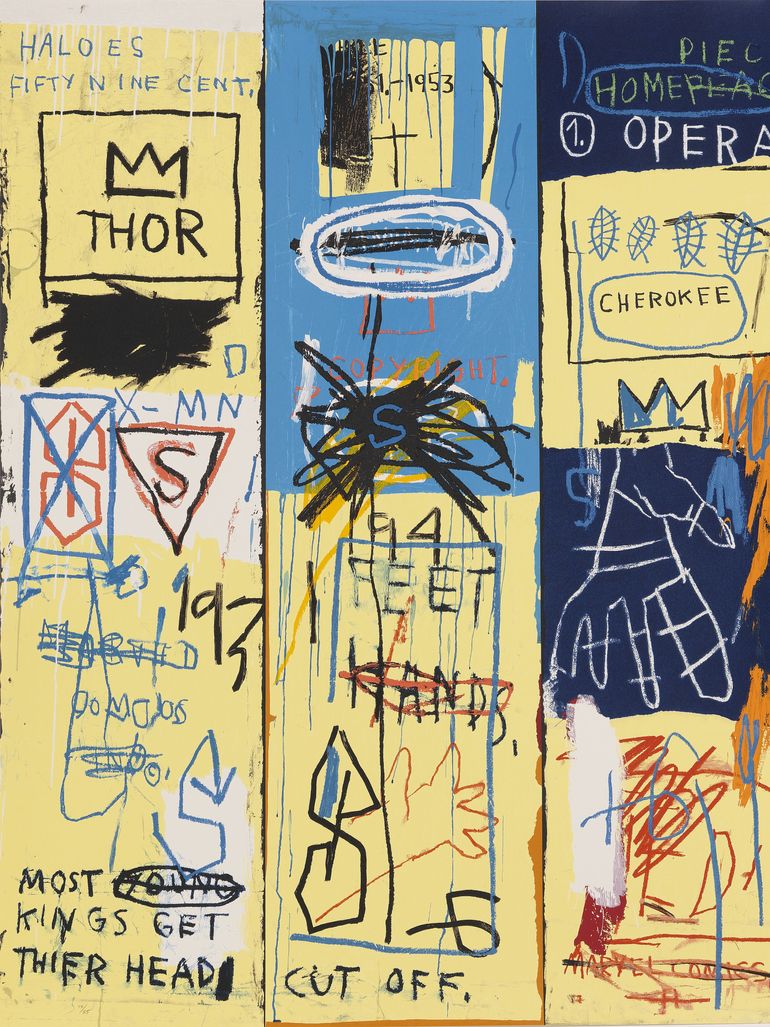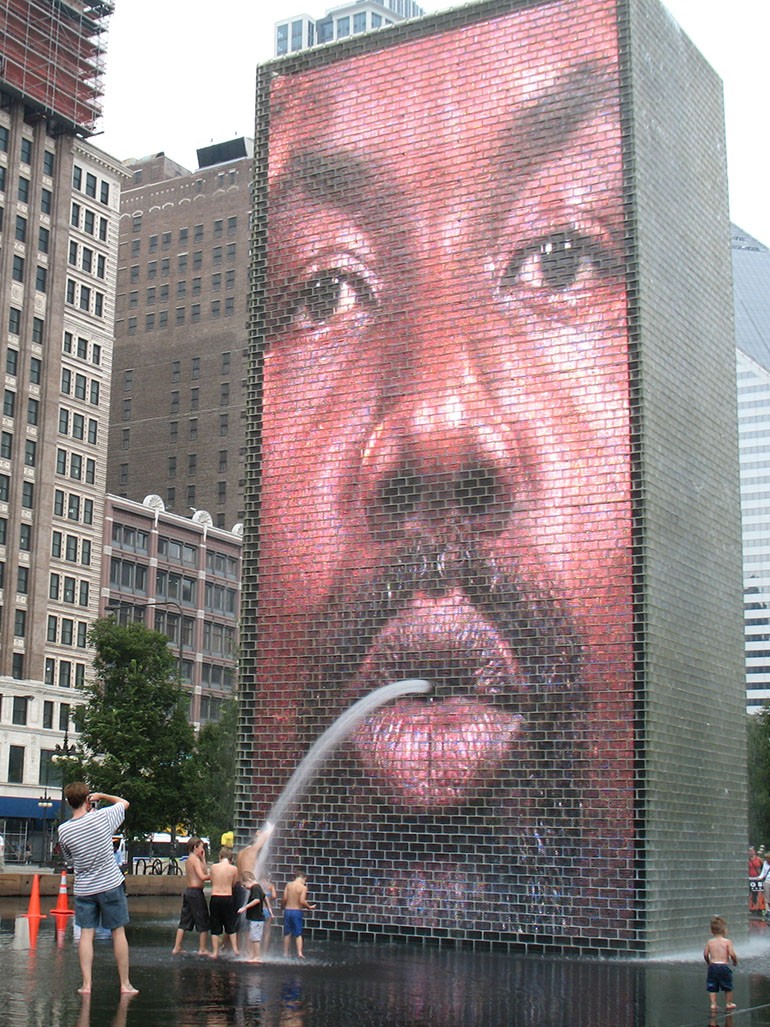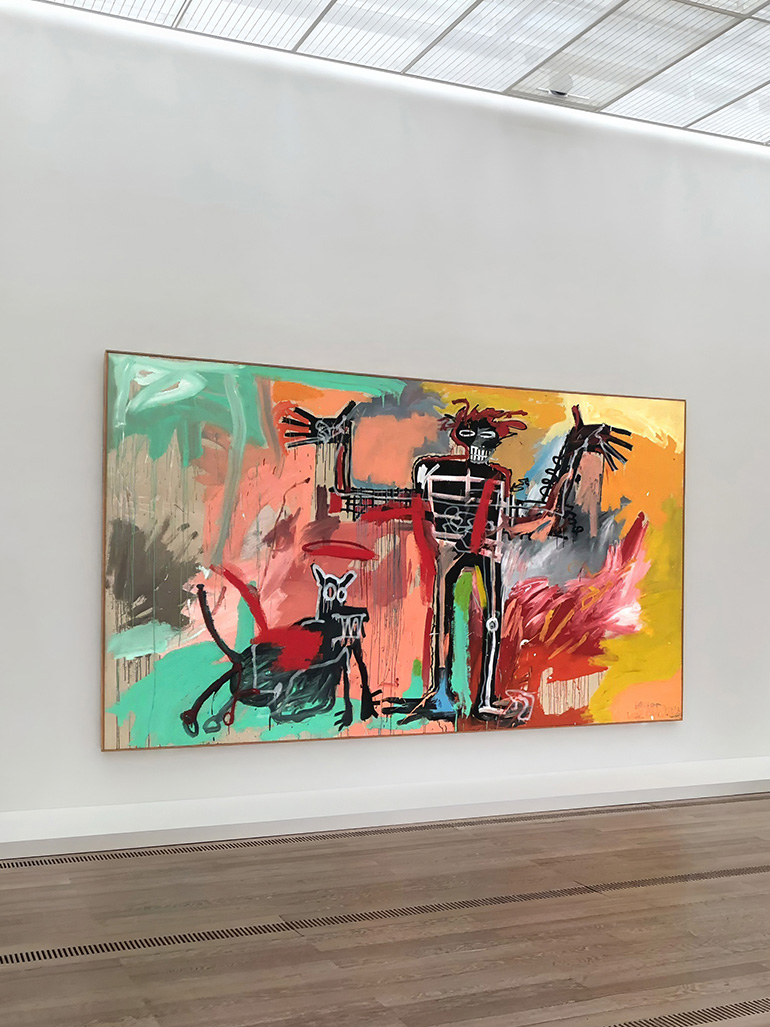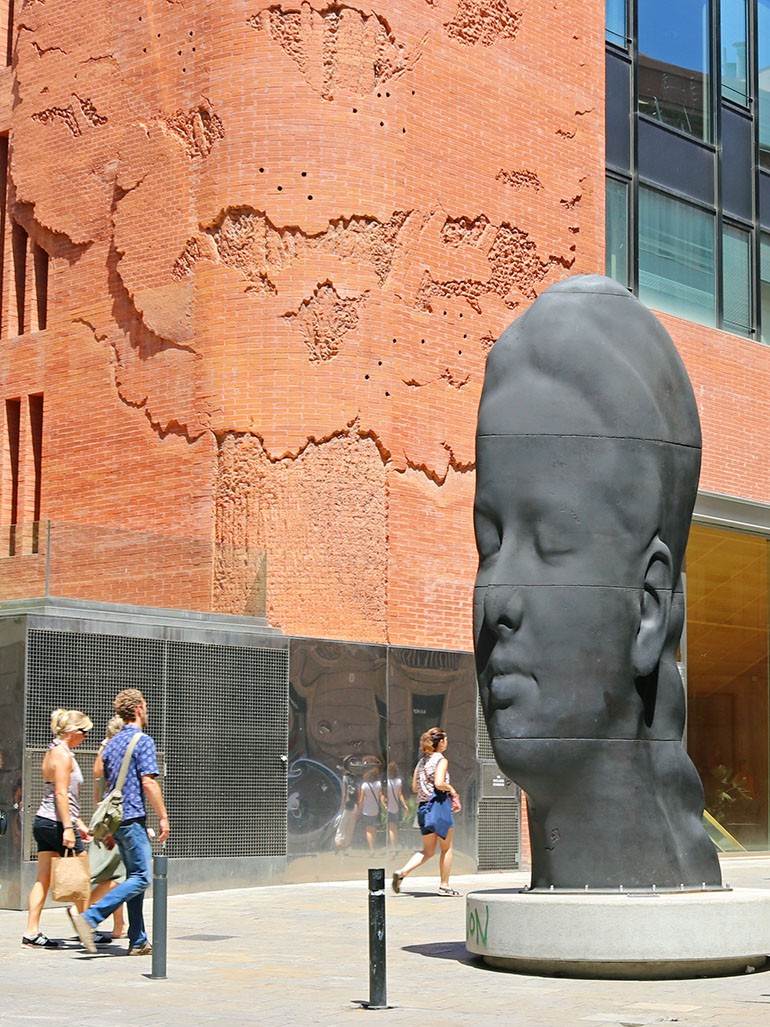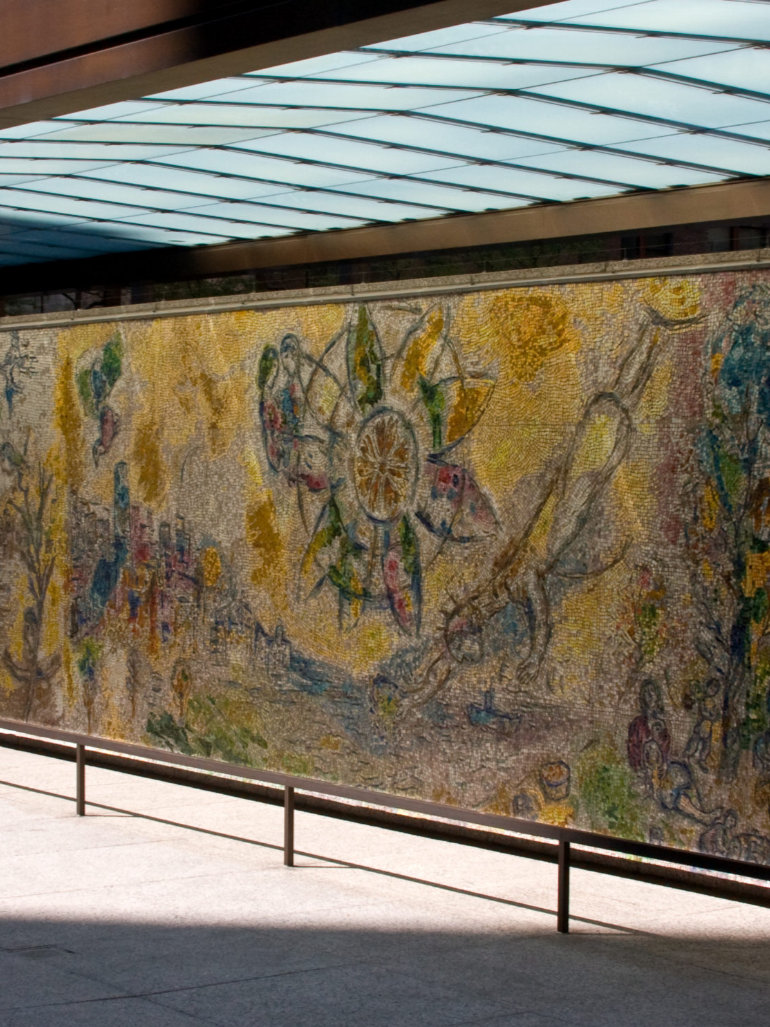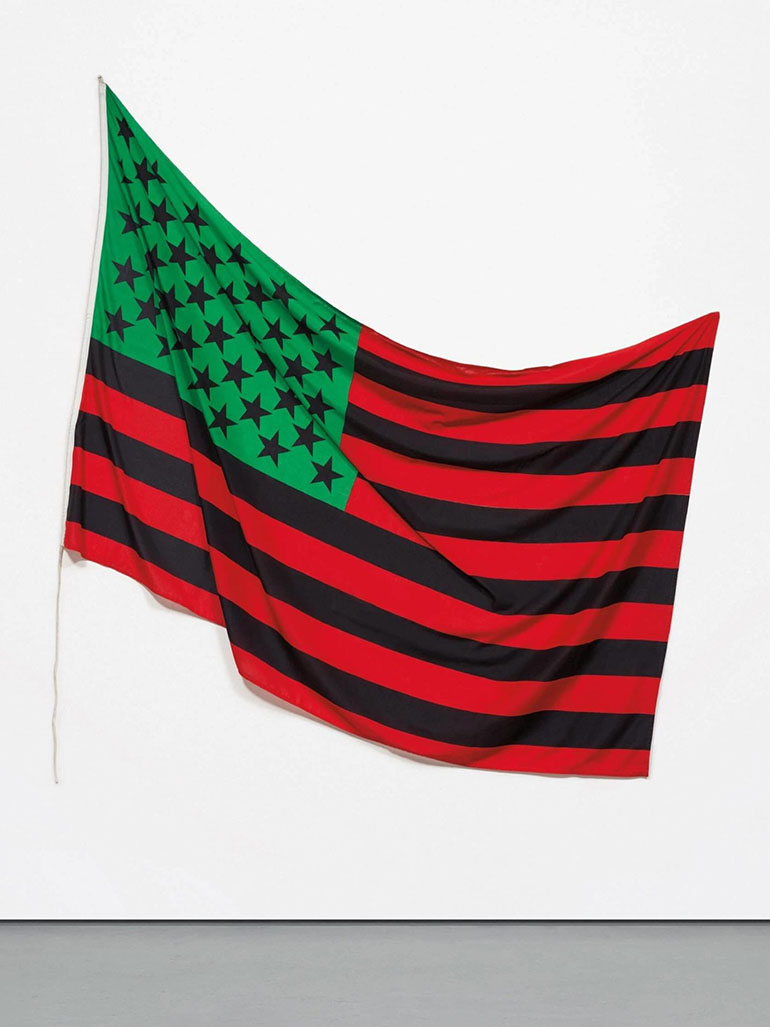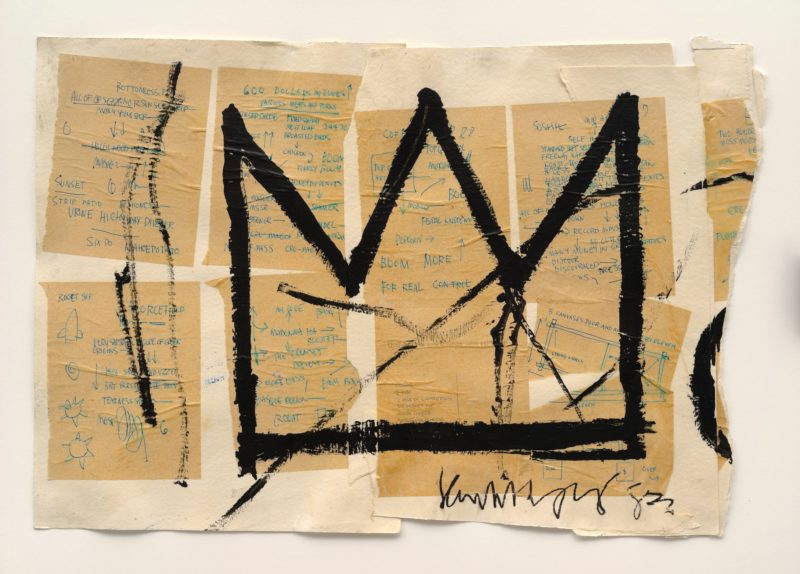
Who was Jean-Michel Basquiat?
Jean-Michel Basquiat was an American artist of Haitian and Puerto Rican descent. He was one of the most influential American artists and focused on “suggestive dichotomies,” including integration versus segregation, wealth versus poverty, and inner versus outer experience. He is considered to be the founder of the neo-expressionism 1 movement.
Crown
Since introducing the crown symbol in his work, the motif started to frequently appear in his new creations, underlying his artistic prowess and the history of fine art.
Origin of the crown & First appearance
The use of the crown was inspired by a now changed logo of King World Productions, which syndicated one of Basquiat’s favorite shows called The Little Rascals. Speaking about how Basquiat was hooked up on the logo, his former girlfriend and roommate stated2 that Basquiat watched the Little Rascals religiously, and Our Gang, which was the show that aired before. At the end of The Little Rascals, if you notice, there is a crown – sketched on the screen – and a title: King World Productions.”
The first crown appeared in his Red Kings (1981). The painting contains two images in the same portrait. On the left side of the canvas, you can see Basquiat himself, tellingly by the initials B, Q. and S. On the right of the portrait is a skull representing one of Basquiat’s influences Pablo Picasso 3.
However, one can notice the difference between the crowns in the two images. The crown on top of Basquiat’s image has five points, while the crown on the right-hand image has four points.
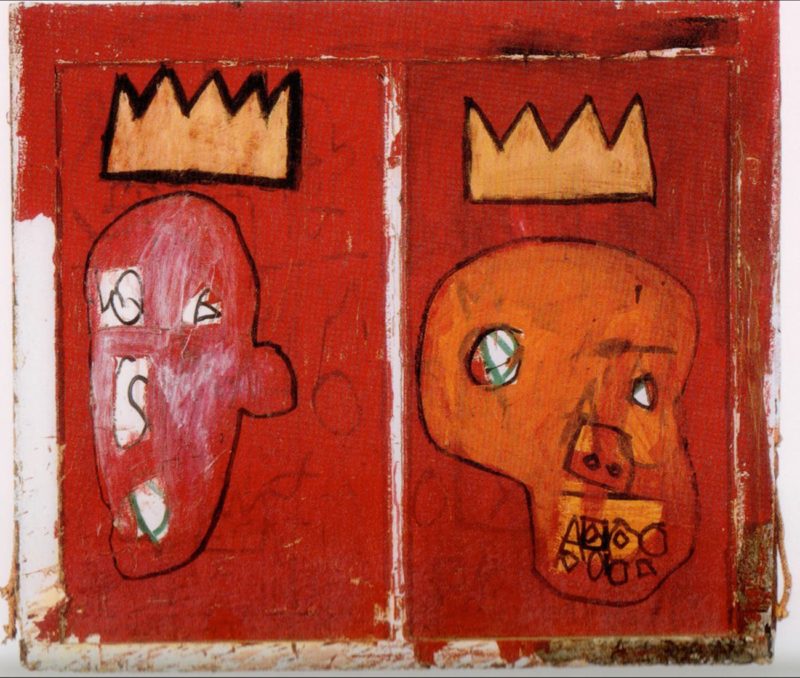
The reason behind the difference is not known. Some observers claim that Basquiat could have painted the four-point crown to represent the letter W, which stands for Warhol, another one of his influencers. The right-hand side image of the skull also resembles the early works of Picasso nine years before Basquiat painted the Red Kings.
Why the crown?
Basquiat used his paintings to attack western histories and depict black men as saints and kings. By regularly using the crown motif, the artist recognizes the majesty of his influencers and heroes, including artists, writers, groundbreaking athletes, and musicians.
Basquiat’s use of crown varies, and the design depends on the message he expresses in that particular painting. He was aware of the impact the accomplishments of his heroes had on him individually and career-wise. And by repeatedly using the crown in his work, he believed that he was continuing their work by depicting himself wearing the same crown.
The crown in Basquiat doesn’t have a fixed meaning, as he would design it to look like a crown of thorns to depict the difficulties they went through in their careers.
It is clearly evident, to some extent, that Basquiat used the crown to:
- Depict himself as a king.
- Acknowledge the people who influence him
- To portray his ambition to become great.
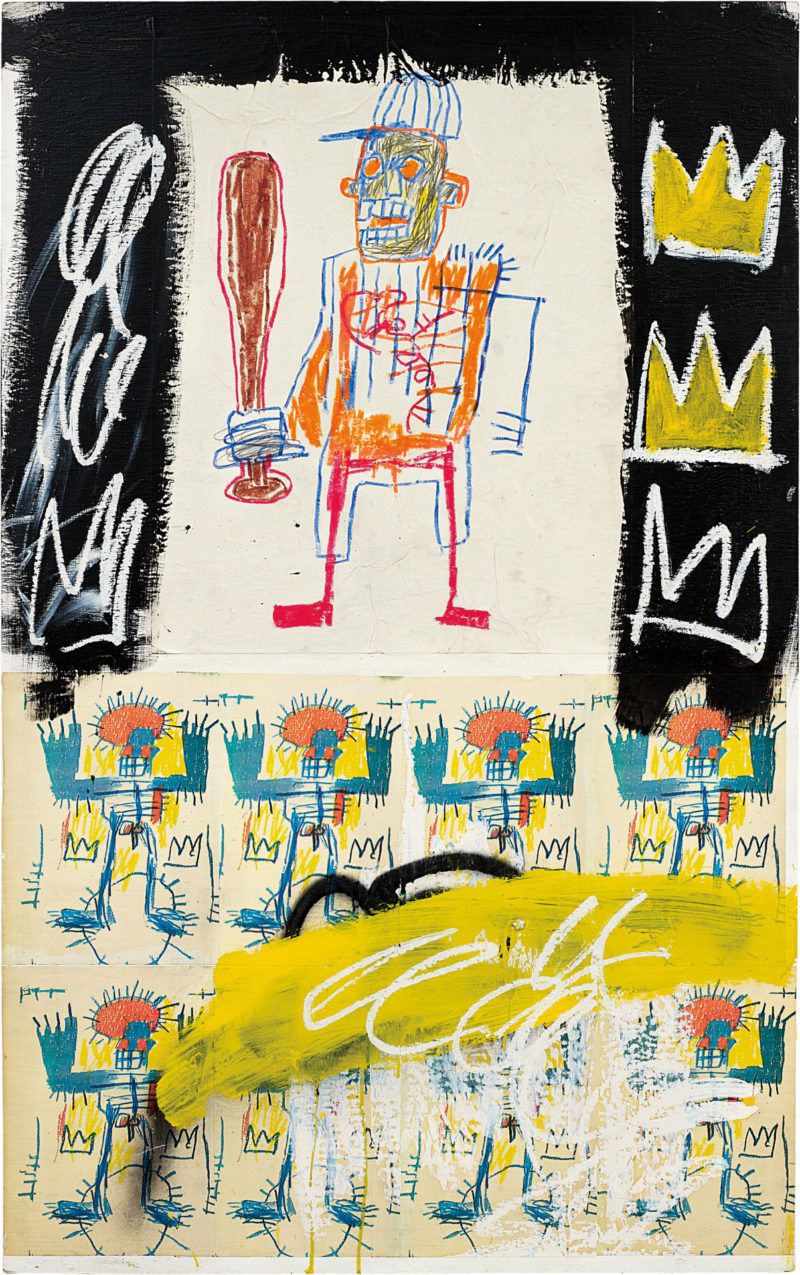
Recurring themes
The dominant themes in his works are crowns and heads. Those symbols imply for many critics the deep struggles between contradictions of perceived self-worth and ostracism, destitution and divinity, and the relationship between the intellect and the material world.
Basquiat was known to use his artistic skills to pay homage to the past artists and their turbulent lives, often appearing simple but carrying deep meanings. The simple designs are excellent proof of the artistic powers of Basquiat.
The skeletal theme that is synonymous with most of Basquiat’s works was influenced by Gray’s Anatomy book his mother gave him. His childhood experiences played a significant role in shaping his future career. He had broken down his relationship with his father while his mother, who influenced his art direction, had a mental illness. With a turbulent childhood, Basquiat wanted to become the king of his peer group.
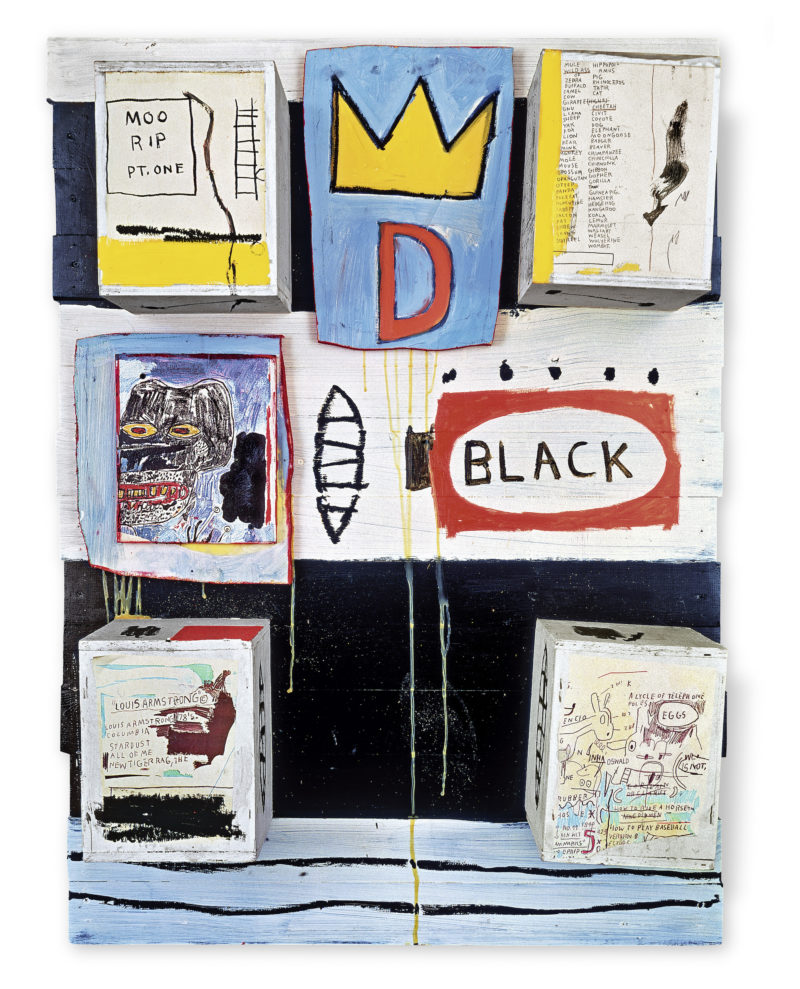
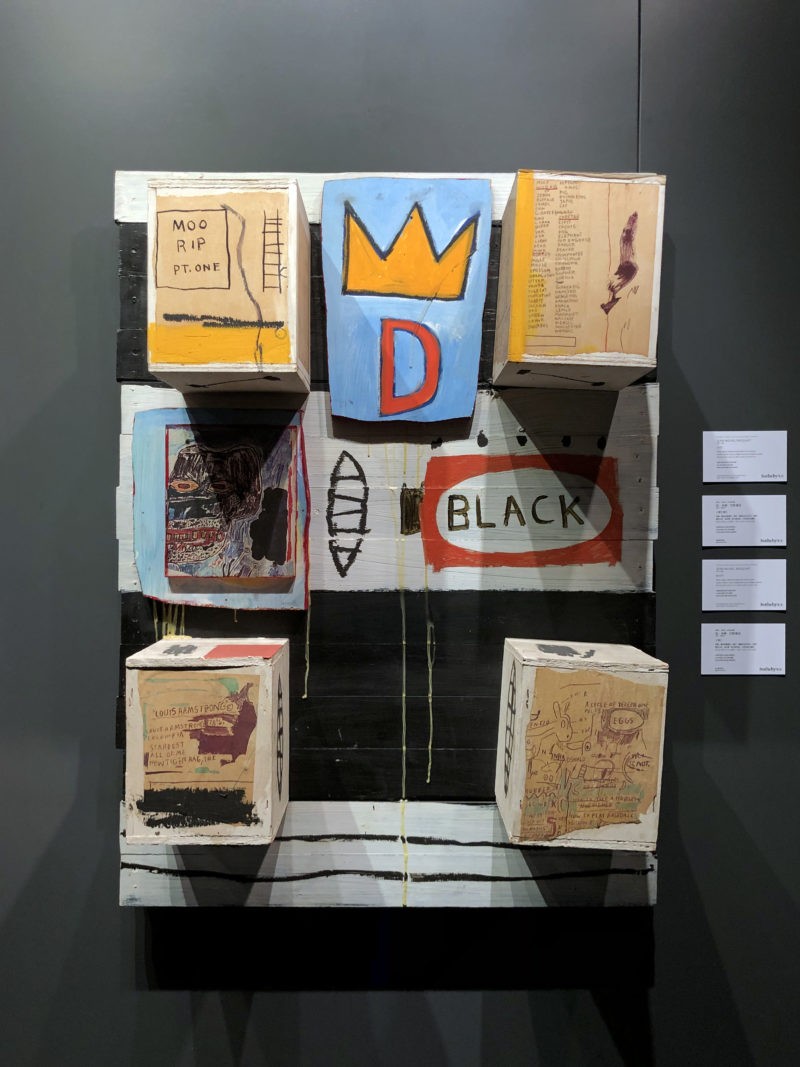
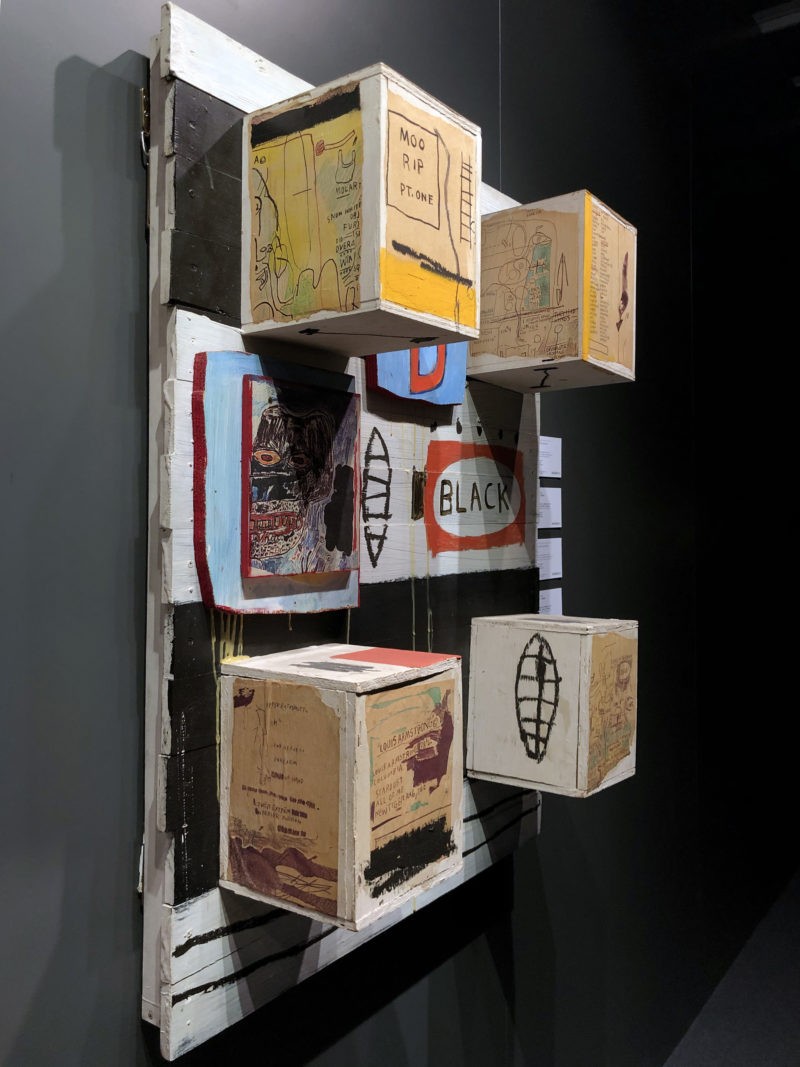
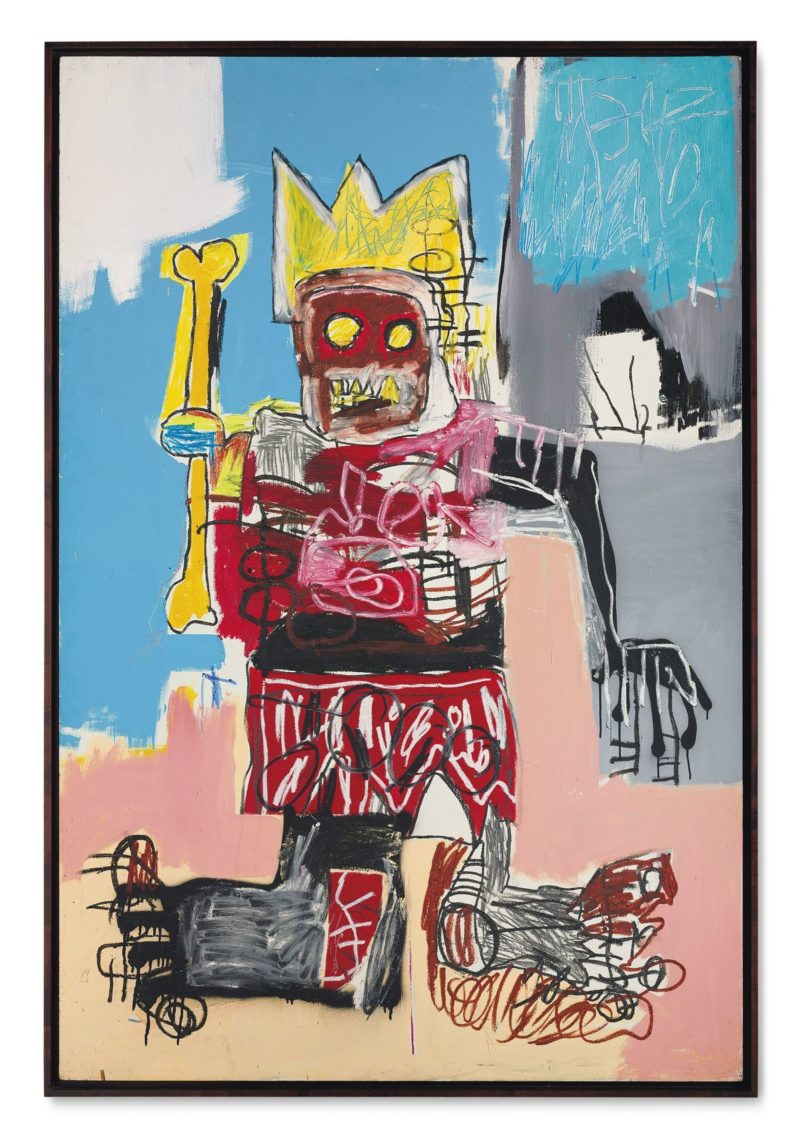
The meaning
The topic of the crown in Basquiat paintings and other works is still debated today, and many critics have put forward many suggestions. It remains ironic to many people how Basquiat, who had issues with his identity and struggles with self-doubt and finding inner peace, would crown himself.
But just like his predecessors, Basquiat, in some way, became a “king” after his death. His work received a lot of coverage and recognition after he passed on from a heroin overdose.
The dark paintings with crowns on top could also be a promotion of his legacy. He achieved the status of a “king” after dying. Some argue that he achieved more when he was dead than when he was alive. But it should not be forgotten that it was his rise to fame that led to him start using drugs.
Basquiat himself had a crown on his head in the form of dreadlocks. His close friend Victor Littlejohn states 45:
A few people had dreads back then, but nothing like Jean-Michel’s. They had a shape and a form of their own, kind of like a crown.
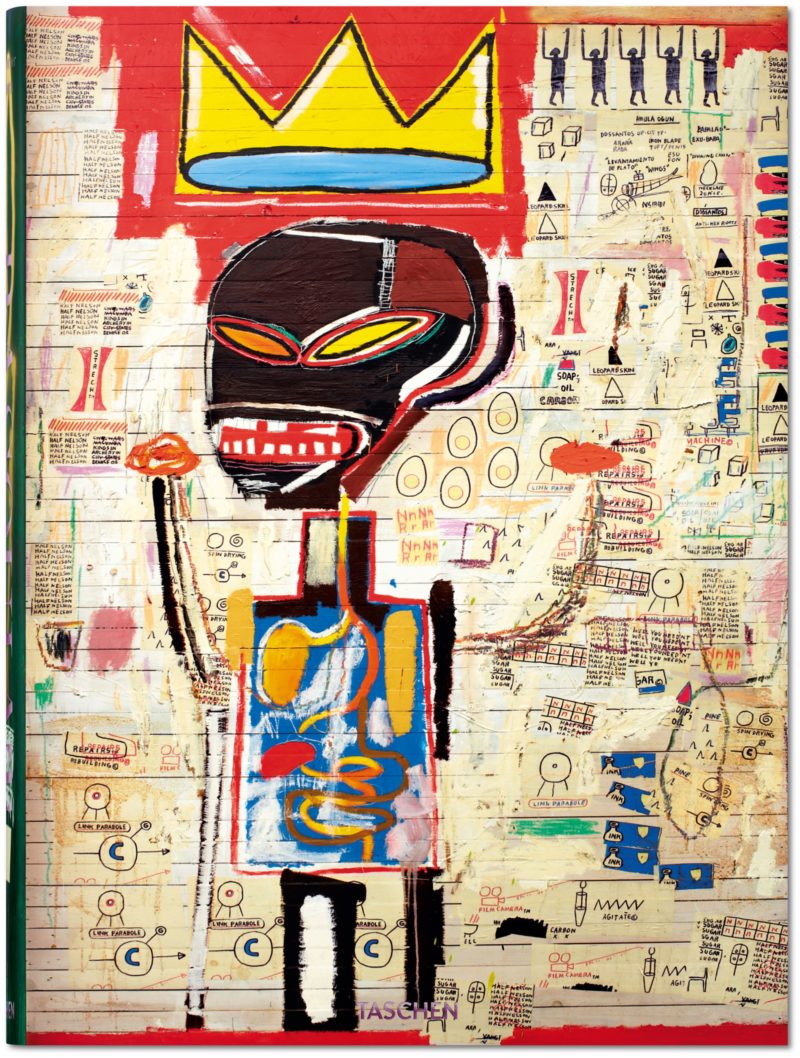
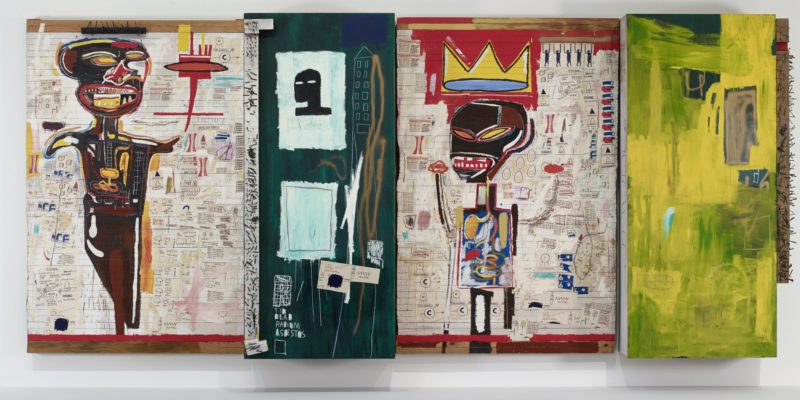
Irony of the Negro Policeman, 1981
In one of his neo-expressionist works titled “Irony of the Negro Policeman,” Basquiat expresses his opinion transparently on the role of black police officers. In the portrait, the artist drew an unnaturally shaped person with a silly facial expression.
The painting features an abnormal hat on the head of the black policeman, but without his signature crown symbol. The hat appears to be heavy and restraining. The artist accompanied the painting with the words “Irony of a negro policeman” and “pawn,” perhaps wanting his message to be received without any complex interpretation.
Despite his black roots and using more often the images of black people, Basquiat wanted to be recognized as an artist, and a great one at that. He was once quoted, saying 67:
I am not a black artist; I am an artist.
This shows that he did not want to be seen as a great black artist but as a great artist and king amongst all artists.
Basquiat was aware of the historical struggles of black men and women, and he tried as much as possible to include these themes in his pieces. Dieter Buchhart, the curator of the Basquiat exhibits in Toronto, Canada, Bilbao, Spain, and Brooklyn, New York, says 89:
Basquiat was drawing and painting the Black experience in which any person from the African Diaspora could see themselves reflected and drawing attention to both their collective successes and struggles. Basquiat’s African-American men are usually not only ready to struggle but also intent on resistance.
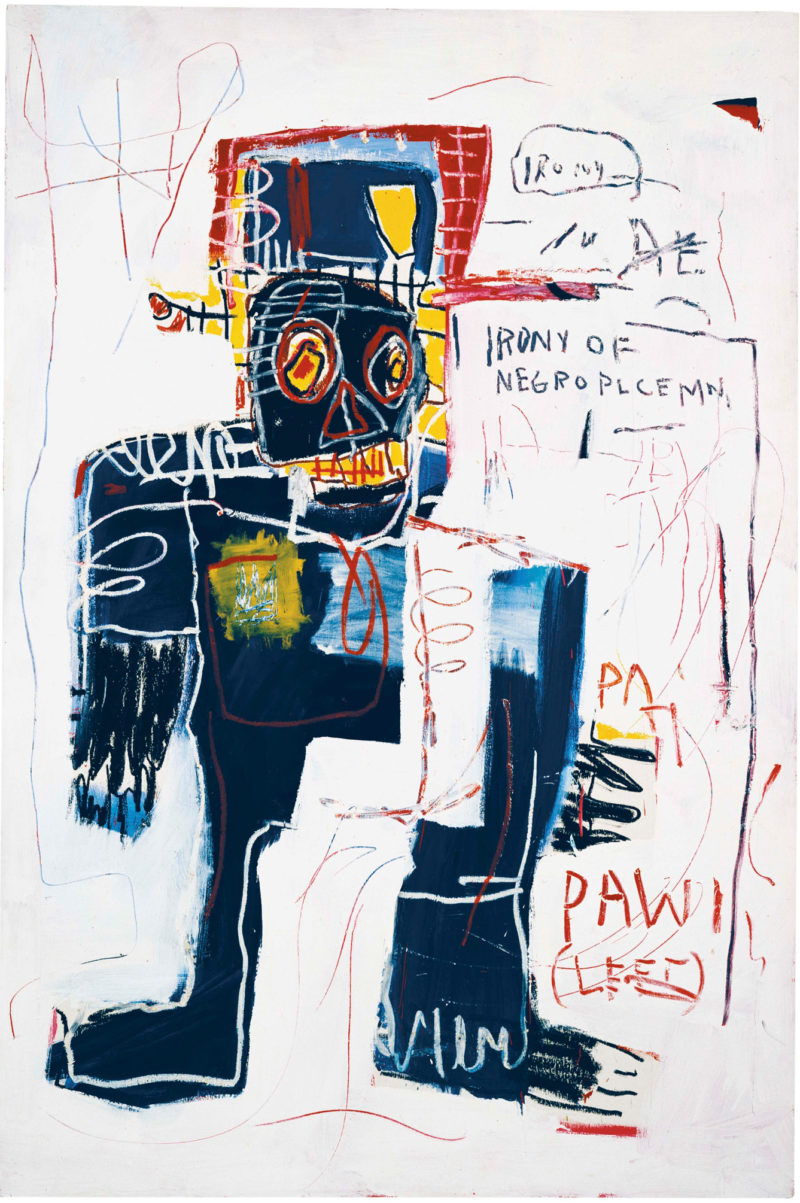
Charles the First, 1982
In his famous painting titled Charles the First 1011, Basquiat features the crown symbol inside a square accompanied by the word “Thor” beneath it and in the upper left corner of the portrait. Unlike in most of his paintings where he assigns himself the crown, “Charles the First” seems to be about something or someone else that is not him.
The work also contains at the bottom the words “most kings get thier head cut off” with the notably misspelled word “thier.” The painting is interpreted as depicting the similarities between the anguish that the artist felt growing up and the beheading of Charles the First at a young age.
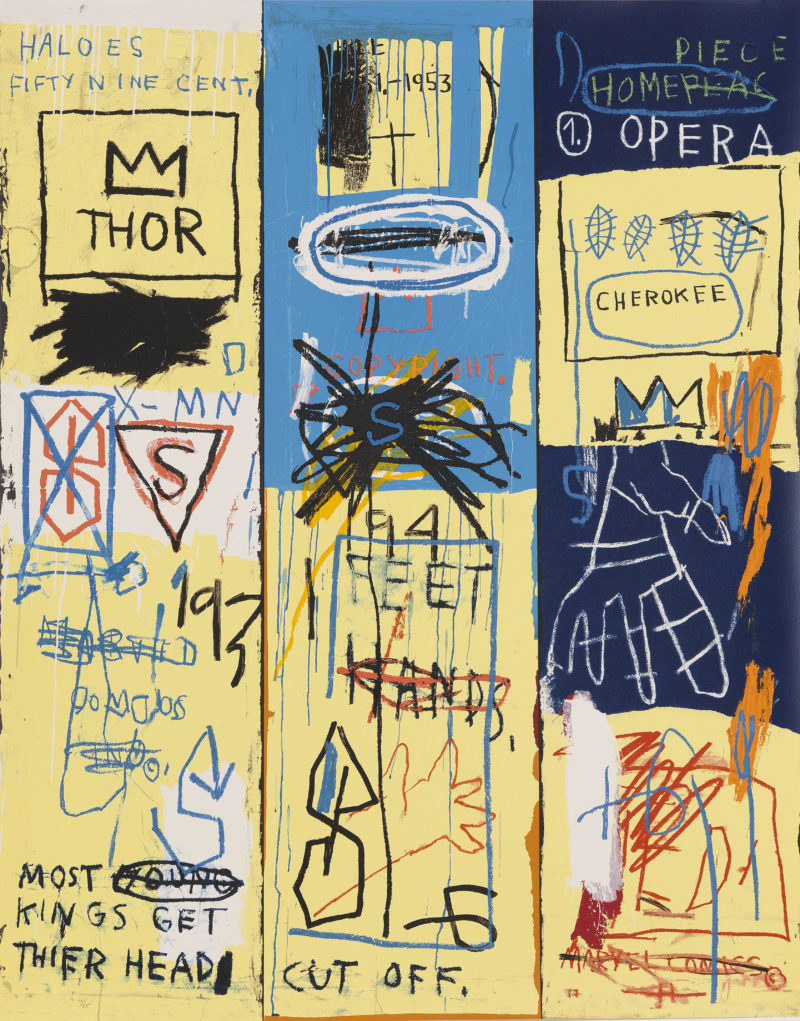
Net Weight, 1981
Another painting that the artist uses the crown is the 1981 titled Net Weight, which features three crown heads. Two of the heads are black and have a three-point crown, while the third one resembles a whitish ghost, which many believe to be anemic-looking Andy Warhol.
Unlike in the two blackheads, the ghost-like head has the crown fused into it. The painting suggests that the two artists are kings. However, it is Basquiat who is Christ-born on Christmas Day, as it is depicted by a black haloed figure of Christ on the left of the painting.
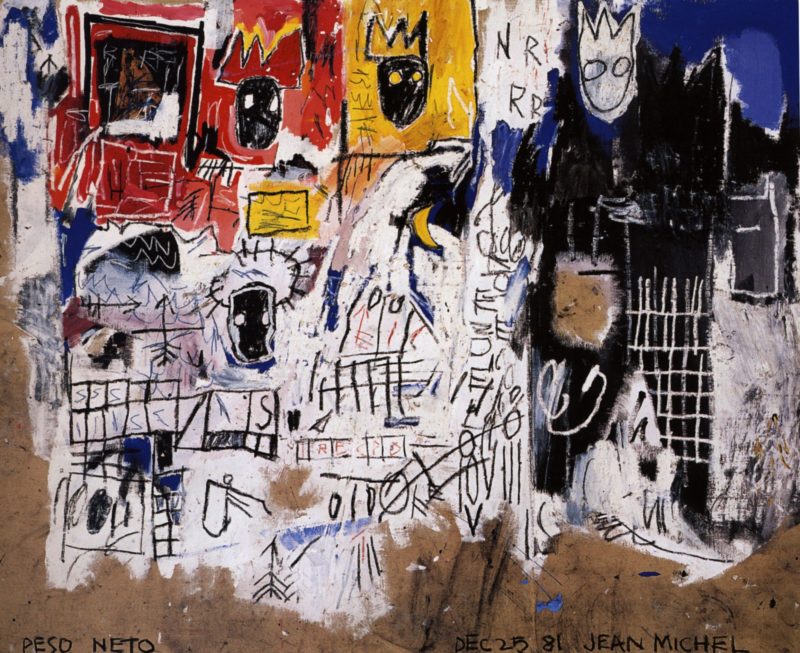
Working with Andy Warhol
After officially meeting Warhol, Basquiat created another painting of his and Warhol, but without a crown. Later in the mid-1980s, Basquiat took part in Andy Warhol’s Factory scene. They helped him to exhibit some of their collaborative projects in 1985, but their joint work didn’t get the recognition they were hoping for. Critics argued that their project was poor.
Yearning for recognition & Legacy
He was known to possess inner qualities privy to only those close to him at a young age. The artist was knowledgeable and had an exceptional understanding of history and how he can use art to represent himself to the world.
Basquiat was yearning for attention as an artist. He wanted the world to know of his talents and to acknowledge him. The use of the crown might be Basquiat telling the world to notice him and the differences he was making in the field of art.
He painted simple images that could be understood by the poor or rich, young or old, black or white, and male or female. However, his messages were directed to the mainstream and the young generation, who were waiting to be noticed instead of making themselves get seen.
Although Basquiat died at the young age of 27, his legacy and impact on the world have not been forgotten. Robert Bland, a PhD student at the University of Maryland, said 1213:
I think the ability to be a non-conformist and also unapologetically Black is a huge part of his appeal and mystique to the Black hipster crowd. More than anything else, his ability to marshal multiple frequencies…into a legible vision of self-expression is the best blueprint we have seen so far post-Civil Rights Black identity. It is as if his famous crown emblem translated to his own literal own image, becoming a canvas. After his death, many people tried to copy his artistic work as well as his personality.
Basquiat’s legacy lived on after he passed. His style of works inspired many from literature, fashion, music, and film. In 1981, he appeared in a movie titled Downtown 81.
After his death, a film titled Basquiat was released about his biography. In the film, Jeffrey Wright played Basquiat, and David Bowie played Basquiat’s hero, Andy Warhol 14.
In literature, poet Kevin Young authored a book in 1991 called To Repel Ghosts 1516. The publication is a compilation of 117 poems about Basquiat’s life as well as his works and the underlying social themes.
Another writer, Jennifer Clement, wrote the biography Widow Basquiat 1718 based on memoirs from Suzanne Mallouk. In 2005, a poem was written in the dedication of Basquiat by poet Molefi Kete Asante titled “SAMO” in the book Beautiful, and Ugly Too 1920.” In 2016, Radiant Child 2122 was published by Javaka Steptoe, narrating the Basquiat life story from the perspectives of a young wunderkind.
Shortly after Basquiat passed, New York-based guitarist Vernon Reid composed a song called “Desperate People”, which addresses the widespread issue of drugs in New York. The musician says that the death of Basquiat inspired him to compose the song.
Analysis
Basquiat, throughout his career, had a love-hate association with the art establishment. Just like the many artists that inspired Basquiat, he never lived to witness the magnitude and appreciation that his work would gain eventually. Basquiat was known for using particular symbols in his art in a manner that would elicit reactions from the viewers. The same can be said for his constant use of crowns for his drawings.
Basquiat borrowed the crown, but what cannot be denied is how he reinvented its use over time. The artist was extremely dedicated and motivated by his works and saw himself becoming a king of contemporary art. A friend of him was quoted saying 2324:
(Basquiat) could walk into a thrift store with five bucks and come out looking like a king. In fact, he basically behaved like a king who had accidentally switched lives with an identical pauper.
Buchhart, mentioned above, continued speaking about the use of the crown in Basquiat’s paintings:
The crown is a commonly known symbol and is it’s accessible for everyone. It was his way to symbolize something special. The question of Black nobility is something that some authors have been thinking about it…there has been a discourse about it. But there are many theories about why he uses it [crowns].
Artist Francesco Clemente says 2526:
Jean-Michel’s crown has three peaks, for his three royal lineages: the poet, the musician, the great boxing champion. Jean measured his skill against all he deemed strong, without prejudice as to their taste or age.
